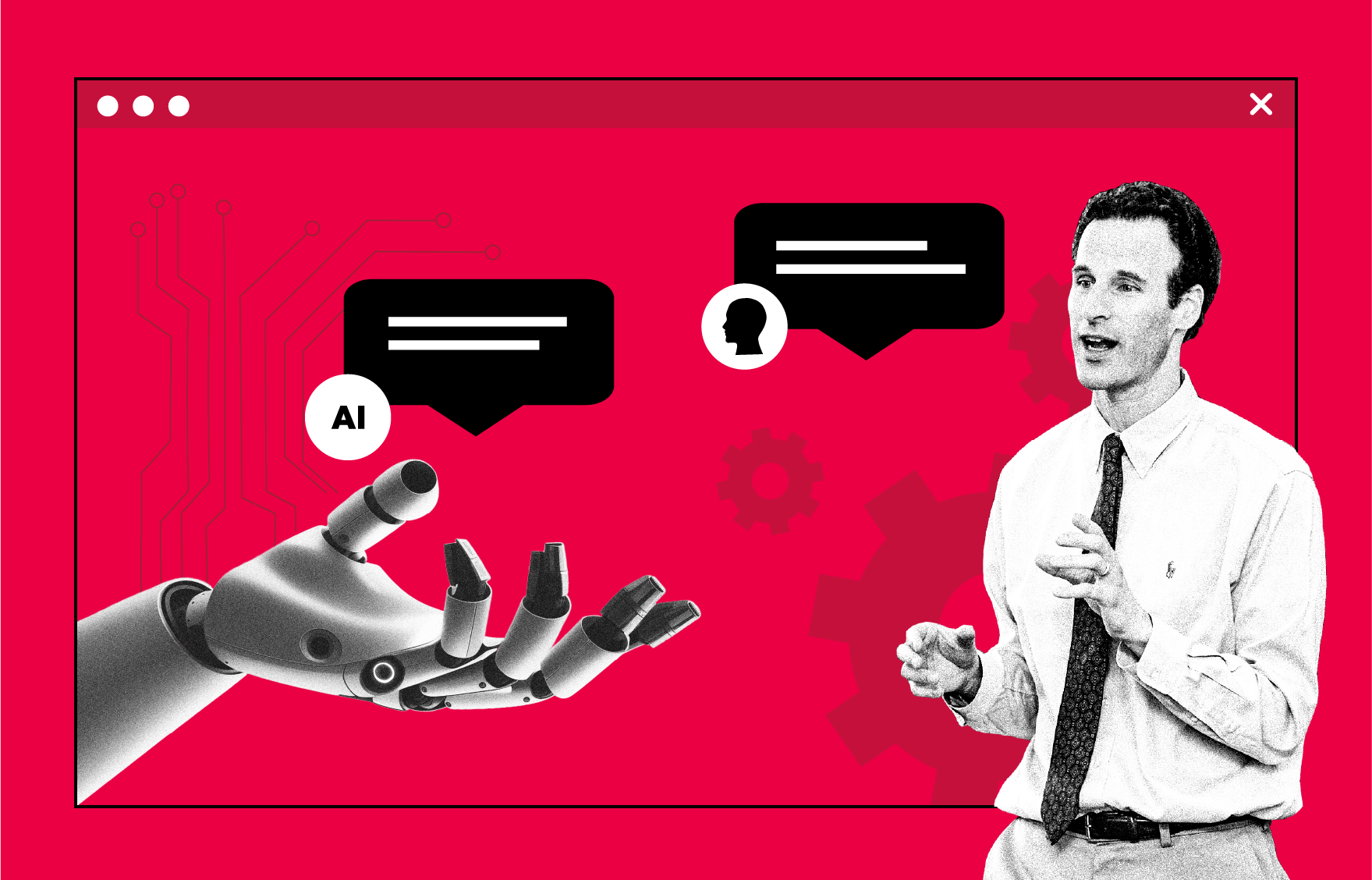Imagine a negotiation classroom where AI doesn’t just assist but actively participates. Dive into the world of AI-augmented negotiation, where Professor Jared Curhan of MIT Sloan seamlessly blends research-backed teaching techniques with the precision of AI to shape the negotiators of the future.

Jared Curhan, Gordon Kaufman Professor of Management at MIT Sloan
Have you ever wished you could go back in time and change something you said? For example, wouldn’t it be amazing if you could revisit a negotiation that didn’t go your way and try it again with a different approach?
With the help of AI, in a new set of courses taught by Jared Curhan, Gordon Kaufman Professor and a Professor of Work and Organization Studies at the MIT Sloan School of Management, the ability to travel back in time is possible.
From Research to the Classroom
More than technology, Curhan brings decades of research to the classroom. As a social psychologist, his recent body of work focuses on the less tangible outcomes of a negotiation, which he calls “subjective value.” It’s a concept that encompasses how individuals feel about the outcome, themselves, the negotiation process, and the negotiation’s impact on interpersonal relationships.
Curhan’s research shows that subjective feelings and experiences during negotiation can have resounding impacts on future interactions, coloring perceptions and shaping future relationships. His research explores how people negotiate, where they might be making mistakes, and how to curb those mistakes to make their negotiations more successful.
Curhan’s negotiation courses, founded on the principles of experiential learning, assign students specific roles in negotiations to simulate real-life application. For example, Curhan might divide his class to engage in two-party negotiations. One half of the students assume the role of a job candidate seeking a comprehensive compensation package, while the opposite half take on the role of a hiring manager with budgetary constraints. A points matrix, containing an embedded utility function for each negotiation, guides students to achieve deals with the highest utility for their respective roles. Students prepare outside of class and use class time for negotiations and reporting outcomes.
Previously, without the aid of technology, teaching assistants collected this data and furnished feedback in the days following the class session. While the interactive methodology profoundly immerses students in the nuances of real-world negotiation dynamics, it presents certain limitations. For instance, the teaching team’s analysis used to take significant time and effort, making timely feedback—a cornerstone for effective learning and adaptation—a bit of a challenge (CAST, 2018).
Technology Phase I: Leveraging Algorithms
Recognizing these challenges, Curhan has experimented with various technologies over the years to augment his approach. For example, in 2019, Curhan won the Teaching with Digital Technology Award from MIT for his work in his 15.672 Negotiation Analysis class where he implemented algorithms that provided real-time feedback. Students learned how their approach compared to that of their peers. Curhan later incorporated a novel software that uses AI to measure nuanced emotions through facial expressions technology. This technology was designed by a startup founded by one of his former students.
Technology Phase II: The Chatbot
With the rapid onset and adoption of Generative AI and prompt engineering, Curhan saw a new opportunity to iterate on his approach: Chatbots built on Large Language Models (LLMs) show real promise as new-age research actors, offering the potential for AI-enhanced negotiation practice.
With prompt engineering, AI can act almost the same way every time, or differently each time, based on the need of the experiment or teaching scenario. This consistency and control over parameters present a tremendous opportunity in both research and teaching, allowing for guided, repeatable experiments and learning experiences.
“The fusion of AI with pedagogical practice is not just the future—it’s the present. I’m genuinely excited to see how this confluence of technology and education reshapes the way we learn, practice, and master the art of negotiation.”
—Jared Curhan
Exemplifying MIT’s motto, Mens et Manus, which means “mind and hand,” Curhan is integrating AI chatbots into his negotiation course at MIT Sloan, a move that blends the depth of his research-backed experiential learning approach with cutting-edge technology to augment the learner experience. This innovative approach to teaching negotiation is now available to learners beyond MIT through a new set of MIT Sloan Executive Education courses.
Harnessing the power of AI, students can practice and apply their learning more efficiently. Curhan is able to prompt the chatbots with instructions for whichever side of the negotiation he wants the AI counterpart to play. Students can then practice negotiating with their digital counterpart as often as they’d like, allowing them opportunities for application and immediate personalized feedback. The AI counterpart can also provide personalized coaching feedback to the student after each negotiation to the extent that the student used the strategies covered in class. Then students can go back and repeat the exercise from any point, by erasing their counterpart’s memory and seeing what would have happened with a different approach. This AI-augmented methodology enhances students’ understanding of both objective and subjective value in negotiation. Exploring these nuances and refining their skills helps them better prepare for real-world negotiations.
While Curhan’s original approach to AI-enhanced negotiation leveraged text-based interactions, technologies are advancing quickly, and he is now incorporating voice chat and the ability to communicate in multiple languages.
Beyond Negotiation: Other Classroom Applications for Chatbots
The success of Curhan’s incorporation of AI chatbots into his negotiation courses suggests a wide range of other possibilities for different areas of study. Whether they give students opportunities to practice sales pitches, simulate customer interactions, run mock interviews, or try out different leadership scenarios, chatbots can offer transformative learning opportunities. They can provide consistent, on-demand feedback, facilitate extensive repetition, and can be tailored to a student’s specific needs at a scale that would be impossible without technology.
For faculty like Curhan who want to amplify the experiential learning component of their courses, generative AI can offer an invaluable advantage. With AI chatbots, instructors can create customized experiences and address the specific challenges faced by their students. Moreover, as chatbot technology continues to evolve, its potential for enhancing a wide range of classroom scenarios will only grow. As management education evolves in an increasingly digital age, embracing such technological advancements offers opportunities to not only invigorate the curriculum but also help prepare students for success in the modern business landscape.
Curhan recommends faculty interested in implementing AI chatbots in their courses check out this demo or the AI resources of iDecisionGames.com, a company founded by an MIT Sloan graduate.
MIT Sloan Faculty: We want to know how you’re incorporating generative AI in your courses—big or small. Your experiences are more than just personal milestones; they’re shaping the future of pedagogy. By sharing your insights, you contribute to a community of innovation and inspire colleagues to venture into new territories. Contact us.
References
CAST. (2018). Universal design for learning guidelines. http://udlguidelines.cast.org









